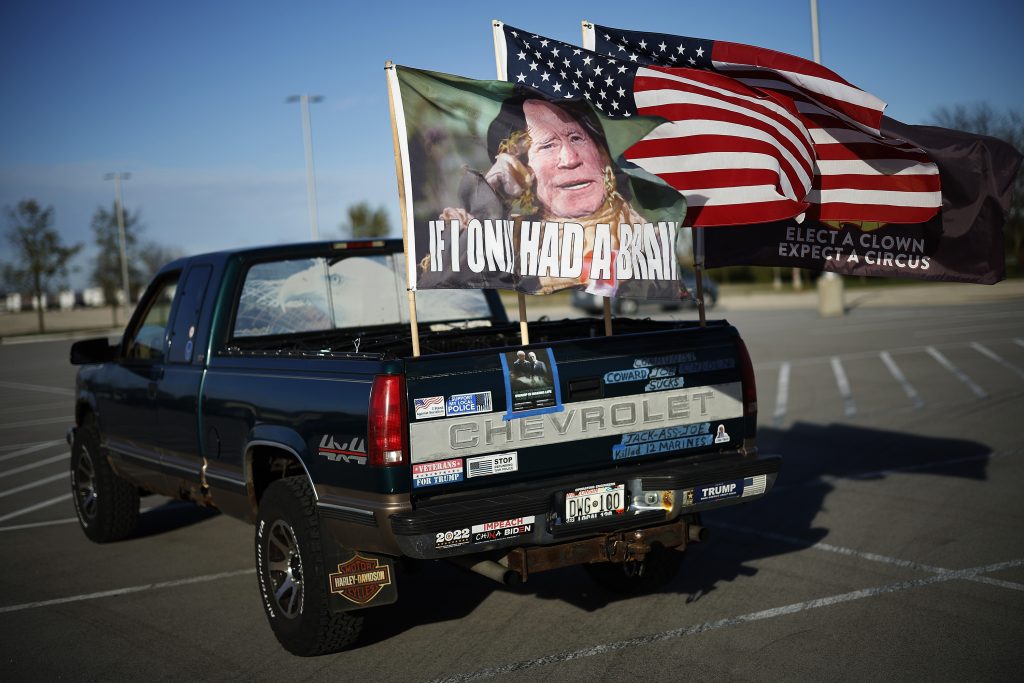By Tim Henderson, Stateline.org
Recently, millions of individuals in the United States have relocated from Democratic cities to Republican suburbs, creating challenges for swing states during a crucial election year, as per a study by Stateline.
Republican suburban counties in four swing states — Georgia in the South and Michigan, Pennsylvania and Wisconsin in the Midwest — gained the most new arrivals; heavily Democratic cities lost the most. In Western swing states Arizona and Nevada, the most appealing areas have been slightly Democratic cities that are anticipated to be highly contested.
These changes mirror a nationwide pattern: In counties that voted Republican in the 2020 presidential election, 3.7 million more people have moved in than have departed, while Democratic counties experienced a net loss of 3.7 million, based on a Stateline study of U.S. Census Bureau estimates and county presidential election data maintained by the University of Michigan.
The U.S. Census Bureau estimates unveiled in March encompassed individuals who relocated within the country between mid-2020 and mid-2023, a period marked by pandemic disruptions, lockdowns in major cities, and the growth of remote work, which prompted a quest for affordable housing in less populated and more picturesque locales. It turns out that these locales also tend to be more conservative. The census figures exclude births and immigration.
It remains uncertain whether the new arrivals will vote Democratic this year, or if they were dissatisfied with Democratic policies in their previous residences and will opt for the Republican vote. These changes are likely to have the greatest impact on local and congressional races, but even a small number of movers crossing state lines could influence presidential vote tallies in swing states.
“We are anticipating an election that could be affected by the migration of small groups of people in each of these states, where a few thousand votes in any one state could impact the electoral vote there,” said David Schultz, a political science professor at Hamline University in Minnesota, who has edited and contributed to multiple books on presidential swing states.
The counties that attracted the most newcomers in Georgia (Forsyth County), Michigan (Ottawa County), Pennsylvania (Cumberland County), and Wisconsin (Waukesha County) were staunchly in favor of then-President Donald Trump in 2020. However, in the three Midwest counties, Joe Biden achieved the best performance for a Democrat since Lyndon Johnson in 1964.
Politics in a transforming county
In certain expanding counties, there has been friction as new residents bring their own expectations.
“People continue to relocate here due to their fondness for the area, but then attempt to transform it into the place they departed from,” stated David Avant, who operates a business networking website in Forsyth County, Georgia. According to the Stateline analysis, around 17,000 new individuals arrived in his county between mid-2020 and mid-2023.
The political landscape may not have shifted in some of the red counties examined. In Michigan, Doug Zylstra became the first Democrat elected to the 11-member Ottawa County Board of Commissioners in almost 50 years in 2018 and was reelected in 2022, but in 2023, a new majority assumed control, resulting in a more conservative direction for the commission.
Sylvia Rhodea, a new Republican on the commission, said that the people of Ottawa County elected them to replace the previous Republican-majority board, which supported Democratic ideology and practices.
During a meeting in January 2023, Rhodea criticized the previous board’s diversity, equity and inclusion program, saying it considered the county's 90% white and largely conservative population problematic for businesses, and sought to replace the American value of equality with the Marxist value of equity.
Rhodea stated in the meeting that there is not a racial divide in Ottawa County, but an ideological one. She emphasized that the welcoming of people will continue, but the divisive ideology needs to end.
The Rev. James Ellis III, a Black resident who moved to Ottawa County in April 2023, lives in the area that elected the county’s sole Democrat. He expressed his disagreement with the “racial divide” remark, deeming it inaccurate and unhelpful. He also mentioned the difficulty people on every side have in listening to each other.
Ellis, who grew up in Maryland and has lived in cities like Washington, D.C., and British Columbia, Canada, attended a local seminary in Ottawa County.
Ellis, from Maplewood Reformed Church, described Ottawa County as an area full of wonderful citizens, lakeshore living, lots of churches, and winter sports, but also noted existing power dynamics and inequities that need attention. He mentioned that the county has a population of about 83% white with small but growing Asian, Black, and Hispanic populations.
‘They vote for the same thing’
In Wisconsin, affluent and suburban Waukesha County gained about 5,200 movers, while urban Milwaukee County lost 37,000. Steve Styza, a Republican who won an open seat on the Waukesha County Board of Supervisors in Tuesday’s election, mentioned that this is not likely to change the politics of either county soon. won “Democrats are definitely trying to make as big of a push as they can to turn the most conservative counties in our state blue or purple and try to gain some kind of foothold because it is strategically important,” Styza said before the election. “If I was on the other team, I’d be trying to do the same thing.”
Waukesha County voted almost 60% for Trump in 2020, and about 38.8% for Biden, the highest share for a Democrat since 1964. The county also voted slightly higher, at 39.4%, for Democratic Gov. Tony Evers in 2022. Milwaukee County voted 69% for Biden in 2020 and 71% for Evers in 2022.
Similar to Avant in Georgia, Styza expressed that Democratic newcomers sometimes threaten the suburban lifestyle that drew them there in the first place.
Styza mentioned that Democratic newcomers leave one place due to concerns, but end up voting for the same thing in a different place, and then wonder why things turn out poorly.
In the Western swing states of Arizona and Nevada, the politics are similar, but the largest cities are still growing fast. Arizona’s Maricopa County, home of Phoenix, voted Democratic in 2020 for the first time since 1948, when Harry Truman carried the county.
In Nevada's Clark County, which includes Las Vegas, the Democratic party has won the presidential elections since 1992. However, the Republican vote has been increasing since 2008, and it reached 44% for Trump in 2020. Some of the growth in Republican support might be due to people moving from the conservative inland region east of Los Angeles in California to Nevada, as stated by David Damore, a political science professor at the University of Nevada, Las Vegas.
On the other hand, Reno has been leaning more towards the Democratic party in recent elections and is attracting more liberal Californians from Sacramento and the Bay Area, according to Damore. Overall, the votes that the Democrats lost in Las Vegas, they gained in Reno.
Some scholars with conservative views argue that people moving from Democratic to Republican areas indicate a political preference or at least an attraction to the results of conservative policies.
Jeffrey Anderson, president of the conservative nonprofit American Main Street Initiative, wrote an analysis of state-by-state moving statistics, expressing the belief that Americans are choosing to move to states that prioritize freedom over states with mandates and lockdowns.
an analysis of state-by-state moving statistics published in City Journal in January. On the other hand, some experts believe that people move based on their housing and job needs without considering politics.
The movement of people across different states and metro areas is influenced more by labor market and housing conditions than politics, according to William Frey, a demographer at The Brookings Institution. He also mentioned that people moving from blue to red states could make those states less Republican, with Arizona and Nevada being examples.
States Newsroom
Stateline is part of , a national nonprofit news organization focused on state policy.©2024 States Newsroom. Visit at
stateline.org . Distributed by Tribune Content Agency, LLC.Millions have moved from Democratic cities to Republican suburbs, complicating politics in a pivotal election year.









